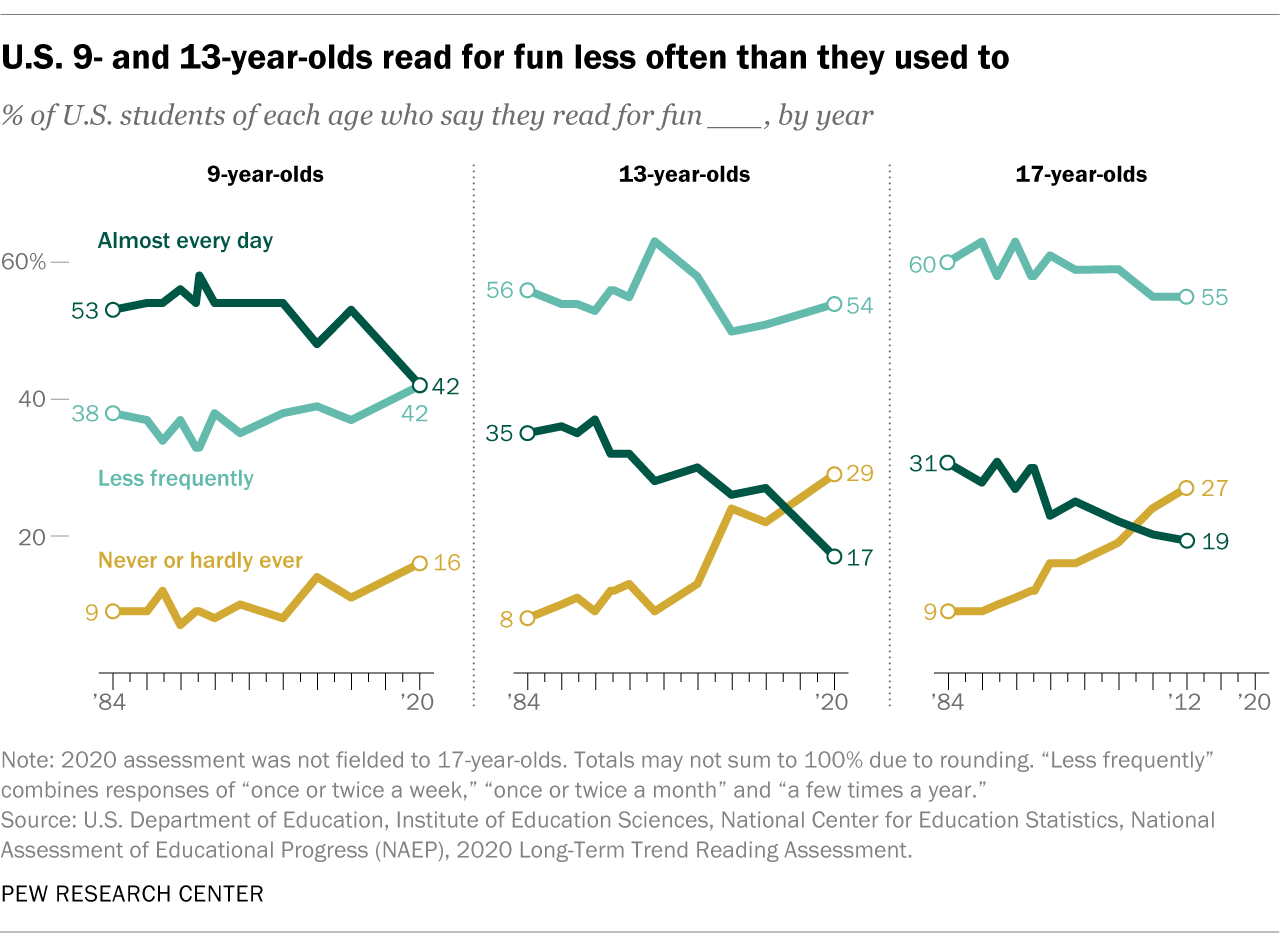
In 1921, as the nascent medium of film had recently soared in popularity, New York Times Magazine commissioned a debate: would movies decrease or increase children’s love of reading books?
Alexander Black predicted it would increase, though his argument was in no small based on how movies of the time required considerable reading with title cards and written dialogue, as the first “talkie” The Jazz Singer wouldn’t debut until 1927:
It may be significant that nine-tenths of the demonstrations in a movie audience are for the flashed words. The pictures may have prepared the way, but the words precipitate the emotion.
The author William Heyliger took the opposing view:
The movie is moving the boy away from good literature. He is getting his fictional entertainment in bald elementary action pictures. Once he develops the movie type of mind he will be lost to good books forever. The repose and repression, the atmosphere and background that are part of all good books, will bore him. His artistic perceptions and appreciations will become of the five-and-ten-cent-store kind, a counterfeit of the real thing.
Curious that he should dwell on boys specifically in that prediction. Over the summer, I visited the Book Barn in Niantic, CT and noticed that only girls were in the young adult section. Why? My theory is that the boys’ entertainment has been completely overtaken by video games.
Alas, Heyliger’s view largely seemed to win out, as this graphic from Pew Research Center (based on U.S. Department of Education data) demonstrates:

The Child, the Book and the Movie
Published: Sunday, November 13, 1921
Leave a comment